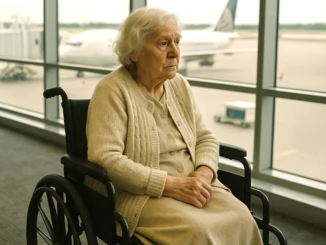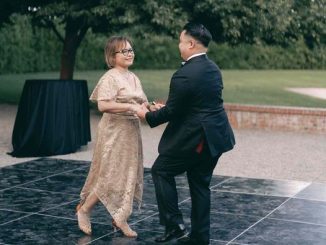Melanie Griffith begs for prayers as her mother is evacuated from big cat sanctuary in path of ferocious LA wildfire that has gutted homes, destroyed 22,000 acres of land AND the set for Wipeout
Melanie Griffith asked for prayers after her mother was evacuated from a wildlife sanctuary because of raging wildfires in Los Angeles.

The actress wrote on Twitter: ‘Please say a prayer for all residents in the path of the #SandFire . My Moms place Shambala is being evacuated.’
Griffith’s 86-year-old mother, Tippi Hedren, opened the preserve in 1983 following on from her film Roar.
There are over 40 big cats – including lions, tigers, cougars, black and spotted leopards, servals, bobcats, and an Asian leopard cat – who are cared for at the ranch.
On Sunday evening, Griffith, 58, confirmed that her mom was safe and the beloved cats had been saved. She wrote: ‘Mom is safe! Shambala is safe. Now sending love and thanks to all the firefighters who saved her and the cats.’
They accept donations for The Roar Foundation, the organization that runs the center.
Sable Ranch – a filming set used in the A-Team, 24 and Supernatural and the site for the Wipeout set – has also been destroyed.
The blaze has grown ferocious new power two days after it broke out, sending so much smoke in the air that planes making drops on it had to be grounded.
Officials said it has run through the area ‘like a freight train’.
The latest figures released by the authorities say the blaze is at 20 percent containment and a total of 18 family homes have been gutted in the areas of Sand Canyon, Bear Divide and Little Tujunga.
On Saturday, authorities said the Sand Fire was at 20 per cent containment, but the U.S. Forest Service corrected that figure and said the fire remains at 10 per cent containment. Above firefighters battled the Sand Fire on Sunday

About 300 miles up the coast, crews were battling another blaze spanning 10,000 acres (16 square miles) north of the majestic Big Sur region.
Authorities say almost 1,700 firefighters who are being hindered by scorching temperatures of up to 112 degrees are battling the blaze in the mountains north of Los Angeles known as the Sand Fire.
On Sunday crews faced another day of hot weather, low humidity and high winds that could once again fan the fires’ explosive growth. Shifting winds sent smoke away from greater Los Angeles and into desert communities, where residents were warned about poor air quality.
Late Saturday evening, a man’s body was found outside a home on Iron Canyon Road in Santa Clarita. Detectives are working to determine whether he was killed by the blaze or another cause, Los Angeles County sheriff’s Lt. Rob Hahnlein said.
Big and Beautiful: Plus Size Becomes the New Average for American Women
Social Media’s Role in Redefining Beauty Standards
Social media has revolutionized nearly every aspect of modern life, and its influence on beauty standards is no exception.
For decades, beauty ideals for women have been narrowly defined. From Marilyn Monroe’s curvaceous figure in the 1950s to the ultra-thin frames of 1990s supermodels, society’s idea of the “perfect” body has shifted over time. However, a consistent theme has been the pressure on women to conform to a singular standard, often dictated by pop culture and advertising.
In contrast, social media has significantly expanded the definition of beauty. Platforms like Instagram, TikTok, and YouTube now feature creators of all sizes, shapes, and ethnicities. This inclusivity is reshaping how people view their bodies, offering representation that goes far beyond the size 0 models traditionally seen in mainstream media.
Plus Size Becomes the New Norm
As American women increasingly embrace body positivity and size inclusivity, research shows that the average body size is also changing.
A study published in the International Journal of Fashion Design, Technology and Education highlights a shift in what is considered “average.” While it was once commonly stated that the average size for American women was 14, the study reveals that the average woman now wears between a misses size 16 and 18, which corresponds to a women’s plus size 20W. Additionally, the average waist size has increased from 34.9 inches to 37.5 inches over the past two decades.
“We hope this information reaches both the industry and consumers,” said Susan Dunn, one of the study’s lead researchers, in an interview with Today. “Understanding these figures can have a profound impact on women’s self-esteem. The apparel industry needs to recognize that these women are here to stay and deserve inclusive clothing options.”
Why Are American Women Getting Larger?
The average size of American women has increased over the past several decades. According to the CDC, the average weight of an American woman is now approximately 170.6 pounds, compared to 140 pounds in the 1960s. Multiple factors contribute to this trend:
- Lifestyle Changes: Sedentary jobs, higher calorie consumption, and an increased reliance on processed foods play significant roles.
- Cultural Shifts: Greater acceptance and celebration of diverse body types have reduced societal pressure to adhere to extreme dieting.
- Genetics and Environment: Genetic predispositions and environmental factors, such as stress and access to healthy foods, also influence body size.
Beyond Appearance: A Health Perspective
While larger body sizes are increasingly celebrated, the medical implications cannot be ignored. Obesity rates have doubled since 1990, according to the World Health Organization. Social media, while fostering inclusivity, has also been criticized for promoting unhealthy lifestyles and sedentary habits that contribute to weight gain.

The Mayo Clinic emphasizes that “obesity isn’t just a cosmetic issue.” It is a medical condition that increases the risk of numerous health complications, including heart disease, diabetes, high blood pressure, high cholesterol, liver disease, sleep apnea, and certain types of cancer.
A New Era of Beauty
True beauty lies in celebrating individuality rather than conforming to a rigid standard. Social media has been instrumental in spreading this message and has the potential to reshape beauty norms in a positive way when used thoughtfully.
What’s your take on social media’s impact on beauty standards? Share your thoughts and pass this article along to gather more perspectives!




Leave a Reply